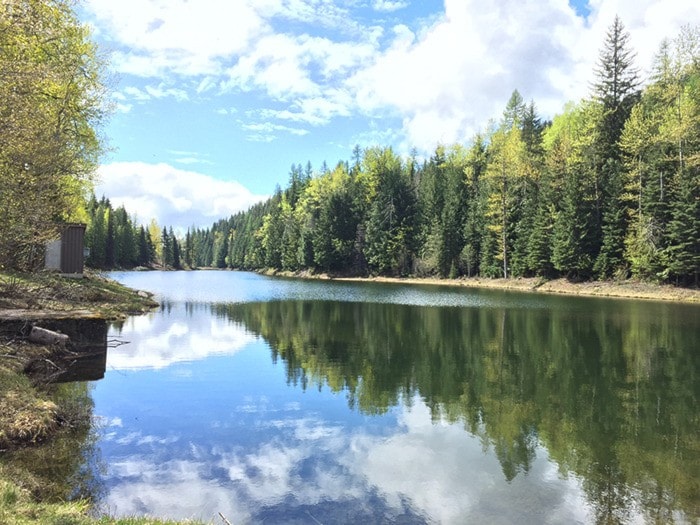A new research project conducted by Selkirk College seeks to offer rural communities a guide for collecting data related to climate change adaptation.
The Columbia Basin Rural Development Institute (RDI) at Selkirk has partnered with the City of Rossland and the City of Kimberley for Phase 1 of an applied research project that ultimately hopes to supply rural communities — either incorporated municipalities, regional district electoral areas or entire regional districts — with a guide for collecting data that will help them make decisions about climate change adaptation, which differs from climate change mitigation.
“Mitigation is when we’re trying to deal with things like reducing our carbon footprint, and kind of trying to slow climate change development, whereas adaptation …, at a very basic level, it’s dealing with it,” says Sarah Breen, researcher at RDI. “Adaptation is particularly important in rural places because, I mean, from a population standpoint, we just don’t produce that much in terms of, say, green house gases. We can and we should do mitigation, but … we’re really subject to the whims of the world at that point, so adaptation’s a good place for us to be.”
Phase 1 will test the State of Climate Adaptation and Resilience in the Basin (SoCARB) Indicator Suite developed in partnership between the RDI and the Columbia Basin Trust’s (CBT) Communities Adapting to Climate Change Initiative (CACCI).
“Basically, how feasible is it for communities, particularly rural communities, to take this indicator suite and actually collect all the data and analyze it and create a baseline report,” explains Sarah Breen, researcher at RDI.
The indicators in the suite are divided into five pathways — water supply, wildfire, extreme weather and emergency preparedness, flooding, and agriculture. The RDI began Phase 1 by asking both municipalities to rank the pathways and the indicators from each pathway according to their importance to the community.
“For Rossland, for water supply, we can see … that lots of [the indicators], in fact the majority of the water supply ones, were given a high priority rating,” says Breen. “So that’s things like climate extremes, stream flow timing, drinking water quality, water loss, water restrictions — those are all key ones for that, whereas a low priority indicator was ground water, because Rossland doesn’t use ground water.”
The task now at hand is to identify data sources for each indicator, with the goal of providing both Rossland and Kimberley with individual baseline reports showing current conditions and trends for the indicators they identified as important. The municipalities can then build on the reports over time, using the data to make decisions related to climate change adaptation and tracking progress to see what is and isn’t working. That means that the data sources identified in Phase 1 need to supply reliable, ongoing data.
“We are drawing from a number of different information sources, and it’s important that those information sources are consistent,” says Breen. “Sometimes there are one-off projects done that collect a lot of really good information that might be useful, but if it’s not done on a consistent and regular basis it’s really hard to use that information.”
And in some cases, municipality-specific data may not useful for looking at trends as they relate to the indicators.
“Some indicators make more sense to do at a larger scale,” says Breen. “Wildfire is a good example. It’s not very often, thankfully, that we have wildfires burning up to the edge of a community, so if you’re just looking at the indicators for a single community, number of hectares burned for wildfires doesn’t necessarily make sense. So we might look at that at a larger scale, a regional scale.”
In cases where municipality-specific data isn’t appropriate, communities could be supplied with regional data instead.
Once Phase 1 is complete, the RDI will move onto Phase 2 — testing and refining the guide created for communities during Phase 1. That will include making sure communities are able to collect and analyze data independently, without the help of Jan Pindroch, a GIS co-op student with a background in climate change, who is doing a lot of the heavy lifting for Phase 1.
“At the end of the day what we want is to be able to help communities track their progress around climate change adaptation, but in a way that suits their capacity and capabilities,” says Breen.
The RDI is still looking for communities interested in participating in Phase 2. Anyone interested can contact Sarah Breen at sbreen@selkirk.ca.
The project has already generated some interest outside the Kootenays. The International Journal of Climate Change: Impacts and Responses has accepted a proposal for an article regarding the project from Breen and her cohorts for a special issue focusing on collaboration between academia and communities.
